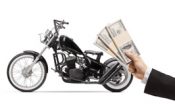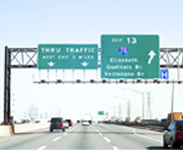Fixing Loose Ends (Replacing Cables)
The cables on a motorcycle were never designed to last forever and many factors can play in the longevity of a cable’s life span. Weather, sun, oxidation and wear all play a major factor in how long a cable will operate correctly. A majority of older motorcycles will have loose or frozen cables. Not only are unadjusted and stretched cables ugly to look at, they pose a serious safety hazard. A broken clutch cable can lead to serious injury if it were to happen while moving. Throttle cables that are stuck will cause the bike to accelerate at an unsafe speed. If the bike is equipped with mechanical brakes using a cable, a snapped cable can mean the bike is not going to stop. On newer bikes equipped with hydraulic brakes and clutches, cables are substituted with hydraulic hoses.
Replacing cables on a motorcycle can be easy or hard, depending on the location and cable end. Most cables on a motorcycle are under tension, which means there is something that is spring loaded at the end. To release the tension, most cables can be adjusted. They can be adjusted with an in-line adjuster which usually shortens the casing of the cable to allow for slack. The cable may also be adjusted at the end.
Clutch cables can usually be adjusted with an in-line adjuster or wherever they meet the transmission/engine casing. Once the cable is loose, the ferrule (ball at the end) can be removed from the handlebar lever. On some motorcycles the transmission end cap must be removed in order to get to where the clutch cable is attached. On others it is attached to a lever. With the slack in the line, the end can be easily removed. To reattach a cable, the order is reversed.
Throttle cables can be adjusted under the throttle housing. The housing clamps over the handlebars and usually splits into two pieces. Once access to the throttle tube is available, the ferrules can be slipped from it and the cables can hang loose. If they are attached to a carburetor, there is usually a spring loaded end that needs to be gently released. A similar arrangement is on fuel injected types. Throttle by wire doesn’t require any cables to be changed. To reattach, just reverse the steps.
This site and articles contained herein are provided for general informational purposes only and are not a substitute or intended as professional advice. Please be sure to refer to your owner’s manual or consult a mechanic for information specific to your motorcycle. The information contained on this site and articles contained herein are provided on an “as is” basis with no guarantees of completeness, accuracy, usefulness or timeliness and without any warranties of any kind whatsoever, express or implied. Rider Insurance Company and its affiliates (together, “Rider”) assume no responsibility for any errors or omissions in the content of this site and articles contained herein. Any action taken upon this information is strictly at your own risk and Rider will not be liable for any losses or damages in connection with your use of this site and articles. Additional terms and conditions apply and are available at https://www.rider.com/plymouth-rock-assurance-general-terms-and-conditions/.

Speedometer cables are unlike clutch or throttle cables. They are usually non-adjusting. They don’t use the same ball-type ferrule, but more of a square one that is pushed inside the speedometer and speedometer drive unit. The ends of a speedometer cable will either have an external nut or screw directly into the drive unit or transmission. Electric speedometers do not have a cable. To reattach the speedometer cable, reverse the steps.
Older motorcycles equipped with mechanical brakes can have a heavy duty cable. These tend to stretch from years of braking. These system typically use in-line adjusters to adjust the tension. Release the tension and let the cable hang loose. There is usually only a ferrule on the handlebar end and the other end will clamp onto the brake lever. A nut and bolt is typically used. To reinstall, just reverse the order.
Changing handlebars may require shorter or longer cables to safely turn the motorcycle. There are cut-to-length cables made for custom applications. On some handlebars, there are internal throttles and wiring. Replacing these cables may take a little more time and some special tools.
All cables should be lubricated before installation. Specially made injectors can be used to lubricate the cable between the housing. Hanging the cable with lubrication flowing from the top will ensure the entire cable is lubricated.
Cables should be periodically checked for wear and fraying. Steel braided cables have a tendency to come apart after years of use. If there is any indication of cable failure, the cable should be replaced. A serious accident can occur if a cable breaks or becomes hung up. Always keep the old cables for reference, once the new ones are installed the old cables can be tossed. Readjust all cables to the specifications of the manufacturer’s service manual. The cables should have end play and the manual will explain how much. Test all the cables before running the motorcycle and travel at a slow speed at first to see if all adjustments are correct. Don’t forget to always ride safe.
Plymouth Rock Assurance is a marketing name used by a group of separate companies that write and manage property and casualty insurance in multiple states. Motorcycle insurance in New Jersey and Pennsylvania is underwritten by Rider Insurance Company. Each company is financially responsible only for its own insurance products. Actual coverage is subject to the language of the policies as issued by each separate company.





